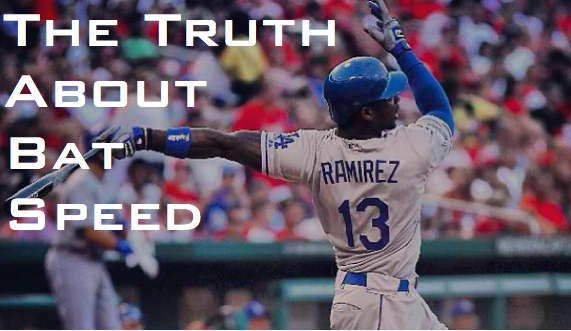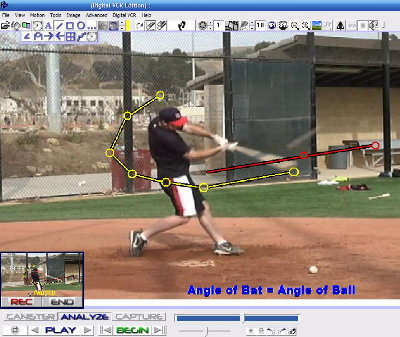
Increasing Your Bat Speed, Hitting and More :: Oceanic Time Warner Cable's AroundHawaii.com
The difficulty
Hitting a baseball is one of the toughest things to do of any sport. According to Robert Adair, author of The Physics of Baseball, a baseball thrown at 95 mph (153 kph) reaches home plate in 0.4 seconds. In less than two-tenths of second, a batter must first determine what type of pitch it is, where the ball is, and where it will be when it reaches home plate. He must then make the right adjustments to the location of where the bat must be swung. In addition, the batter must drive the ball far or it will surely be an easy out.

Making matters worse
Many youngsters have been taught the mistaken notion that a downward stroke or swing is best way to swing. Yet, is this the way major leaguers swing?
"Not so," say MLB hitting instructors such as Mike Epstein of the Oakland A's and Don Slaught of the American League leading Detroit Tigers as well as many collegiate hitting coaches.
Simply put, Mike Candrea of University of Arizona's Softball and USA Olympic coach believes that a batter has the best opportunity to hit the ball if swinging on the same plane as the incoming ball.
Think about this. As soon as a pitcher releases a ball, it's in gravitational free fall, whether it's a fastball or a change-up. A 95-mile-per-hour fastball drops 1.7 feet between the pitcher's release point and the point of a bat-ball collision. A curve or slider may drop as much as six feet according toBiomedical Engineering Principles in Sport by Bahill, etal..
This means that the optimum plane of the swing should be upward and match this downward fall of the ball.
Coach Sato adds, "Now, don't get me wrong, swinging down on a pitch is still used in some instances, but for the most part being on the plane of a pitch will give you a better chance." But just because you are on the plane of the pitch doesn't mean you are going to drive something deep or to the gap.
This brings us to the next point - driving the ball. We've seen many a player make contact with the ball and have difficulty in hitting it anywhere out of the infield. Coach Sato believes that hitting the ball too far out front will cause a topping of that pitch and lead to grounders. Conversely, hitting the ball too far back will cause more backspin and popups. Only by hitting the ball at the right place, "on the screws", and at the proper hand slot will the batter be able to really drive the ball. This will cause a major collision that will create the baseball or softball to compress and have the trampoline-like effect to jump off the bat.

Hitting it deep
According to a study, How to Hit Home Runs: Optimum baseball bat swing parameters for maximum range trajectories, George Sawicki and William Stronge, discovered several interesting facts that support our theory:
- There is an optimum strategy for achieving maximum range. For a typical fastball, the batter should undercut the ball by 2.65 cm and swing upward at an angle of 0.1594 radians.
- Range is most sensitive to bat speed, which suggests that a batter ought to work on bat speed before anything else to increase the range of his/her hits.
- Range is not sensitive to wrist roll. Attempts to roll the wrists on impact do not increase range enough for it to be a useful and advantageous strategy. Wrist roll may limit bat speed, which is clearly more important.
So there it is. Swinging slightly at an upward angle is the way to get maximum distance of the struck ball. If you're not technically trying to achieve this swing, you're selling yourself short and you will only be a singles hitter.
Also, the most important element for hitting a baseball farther is bat speed. Thus, bat speed needs to be the training goal or the measured criteria. Many baseball athletes get caught up in the strength and muscle mass gains but neglect to develop and measure their progress in the speed department. And what's the best way to increase your bat speed? Hmmm. Use a device that will allow you to train your movement pattern at maximum velocity, high rate of force development, AND at high force generation levels.



No comments:
Post a Comment